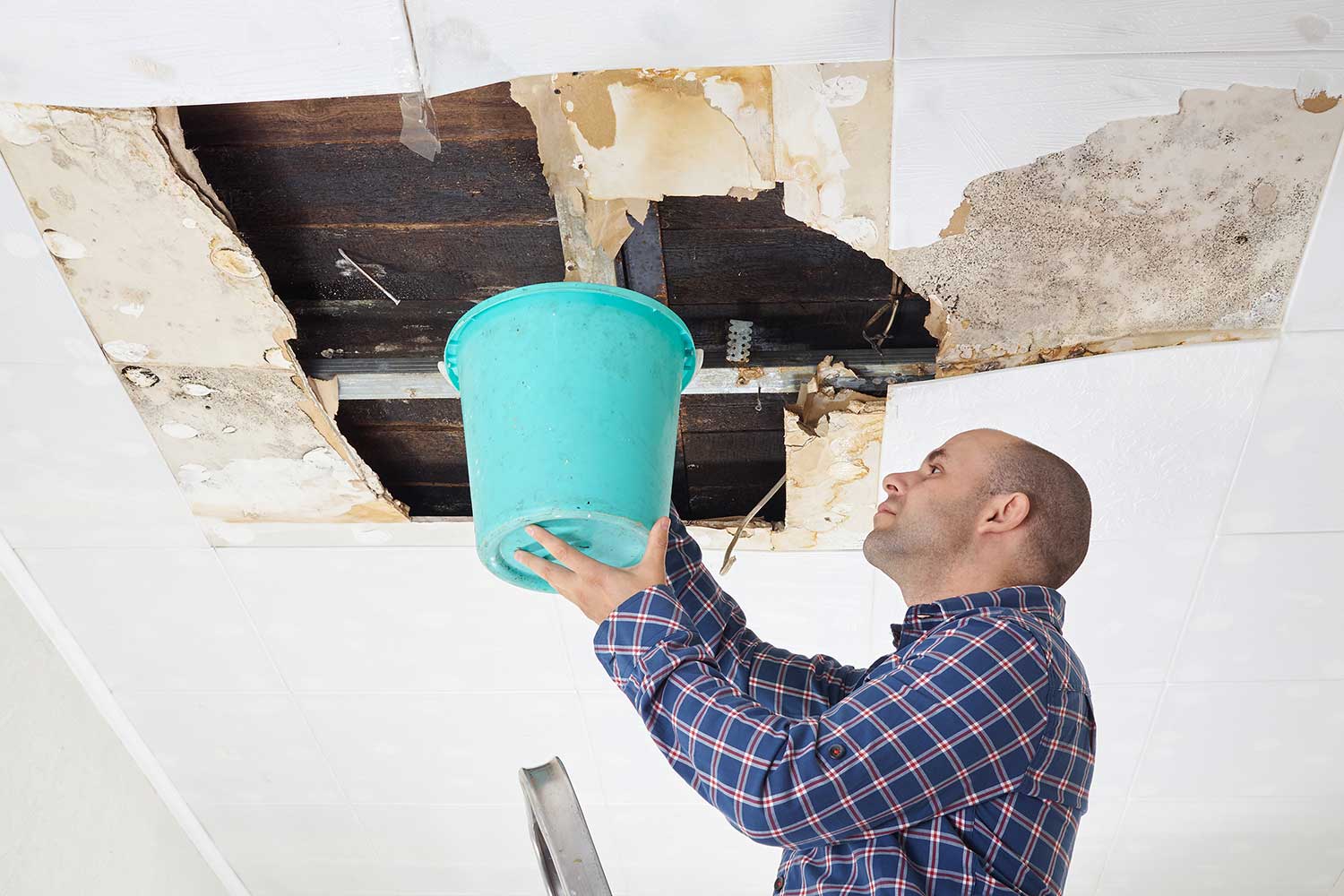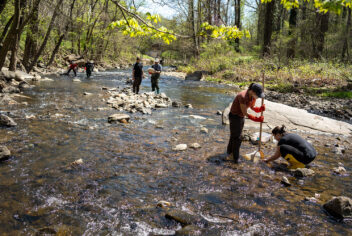Because property policies typically exclude water damage unless something else is accidentally or suddenly damaged first, you may get stuck having to repair a roof, deal with damaged ceilings, and replace ruined carpet and electronic equipment, all with money that could’ve been used to support your nonprofit’s mission.
For example, if your roof gutters are plugged and water leaks into our building after a storm, insurance is not going to cover just because there was a storm and you had water damage. Unless that storm damaged your roof and caused the leak, your insurance is not going to provide coverage. In some cases, organizations are even forced to interrupt their services to deal with repairs, depending on the severity of the damage. And while these situations are preventable with regular maintenance, some nonprofits find this out the hard way. Below are two recent Nonprofits Insurance Alliance Group claims that illustrate just that.
Claim 1: Rooftop Wear and Tear
The first claim involved a roof leak, which resulted in interior water damage to the nonprofit’s building. An investigation showed that the leak was a result of both the type of roof, which was flat with an asphalt finish, as well as a depression in the roof. Additionally, a nearby tree had a branch that extended over the roof, directly above the location of the interior water damage, which allowed for the build-up of leaves. All of these circumstances combined led to a ponding of water, which allowed the water to reach a level where it was able to seep through several cracks in the roofs tar seams and into the interior of the building. Inspection of the roof did not identify any damage to the roof itself from the recent storm, and wear and tear were determined to be the cause of the incident. Because there was no damage caused by a “Covered Cause of Loss,” the nonprofit was left to bear the cost of the internal damage, in addition to the repairs needed to prevent future leaks.
Claim 2: Blocked Drainpipes Cause Surface Water Accumulation
The second claim involved exterior drainage pipes, which overflowed, causing interior water damage. An investigation showed exterior drain covers had been blocked by debris, resulting in the accumulation of surface water that eventually started seeping into the interior of the building underneath an exterior door. Therefore, the claim was not a result of water being backed up from the drain, but rather water not being able to enter the drain in the first place. As with the previous claim, damage caused by surface water was excluded from coverage, as the damage was caused by lack of maintenance, rather than a “Covered Cause of Loss.” As a result, this nonprofit member was also left to cover the cost of repairs.
How to Prevent This From Happening to Your Nonprofit
Every building is at risk for water damage, whether it’s a result of inadequate maintenance, such as wear and tear on a roof or old plumbing, or gutters and drain pipes that are clogged by the accumulation of leaves. Every building needs to be checked regularly for things such as damaged or blocked roof scuppers, pipes, gutters, and drains. One question to keep in mind is: “Is there water where there shouldn’t be?”
Small leaks can also turn into huge and expensive headaches, not covered by insurance if they are not addressed promptly. This includes leaks from cracks in doors and windows, improper seals around door and window frames, poorly maintained roofs, and cracks in foundations, exterior walls, and plumbing and HVAC systems.
Proper maintenance includes routine cleaning. Your nonprofit should check all drains, gutters, and downspouts for leaf litter, debris, and other obstructions that can cause water to pool. If you’re in an area experiencing winter snow storms, be sure to clear your snow and keep your gutters and downspouts clear so you don’t develop an ice dam. Also be sure to keep an eye on your organization’s drains and gutters as snow and ice begin to melt – you may identify a smaller, unanticipated leak not detectable in warmer conditions.
Here are some general tips for preventing water damage:
- Conduct quarterly inspections of your property for the purpose of preventative maintenance.
- Schedule regular seasonal roof inspections, before and after expected rain or snow.
- Consider installing a solar roof pump or a sump pump. If you have a pump, make sure it’s operational.
- Inspect and maintain fire sprinkler systems.
- Identify and repair all leaks and cracks in windows, doors, and exterior walls, as well as with the roof, foundation, and plumbing and HVAC systems.
- To protect pipes in winter, consider setting your thermostat a little above freezing if you’re going to be absent from the premises for vacation or a weekend.
- Prepare and post a schedule of tasks to ensure that maintenance gets done in a timely manner.
Additionally, if you’re renting your premises, please be sure that your lease includes maintenance to be handled by your landlord, or if it requires you to conduct that maintenance make sure you do so on a regular basis.
We are a nonprofit and we insure only nonprofits, so we know that it is not easy to find the funds to conduct proper maintenance. But, we know all too well that you either pay the money upfront for routine maintenance or pay a lot more later to clean up the damage. As your insurer, one of the things that bothers us the most is to be presented with claims that we cannot cover. And we know that you certainly don’t want to be surprised to learn that your insurance doesn’t cover damages that could have been avoided by proper maintenance. Instead, we much prefer that you take this advice to heart so that we never have to tell you your claim isn’t covered. Remember, we’re here to help. Property maintenance is a part of good risk management, and risk management support is part of your insurance policy!





